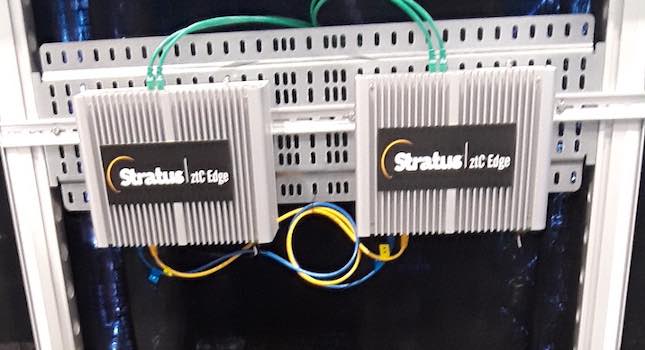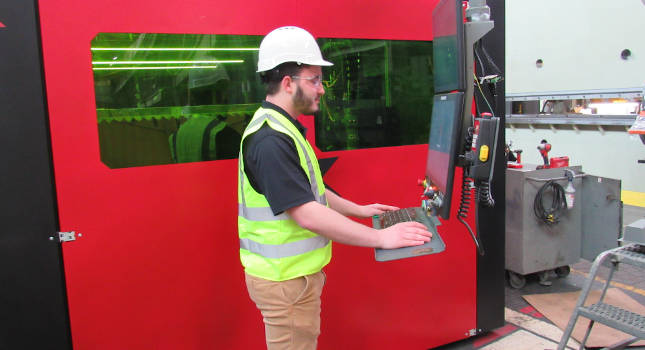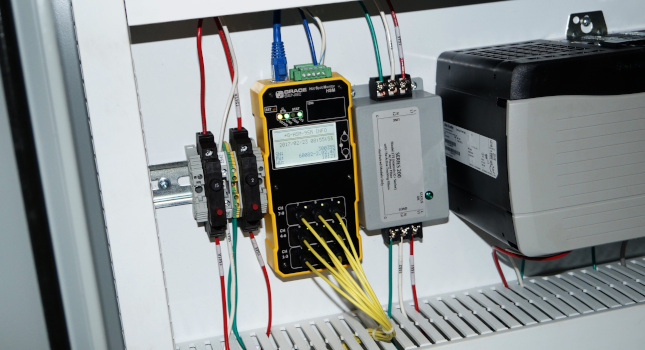The COVID-19 pandemic is forcing companies to adjust their business practices and settle to a new normal. See four tips on how edge computing and the Industrial Internet of Things (IIoT) can help companies adjust.

The COVID-19 pandemic happening all over the world demands companies and people think and act differently in spite of challenging odds. For many, the call of the day is maintaining operational levels while our most critical resource – people – have been constrained by needed social distancing practices and work from home requirements.
For some, the situation requires scaling back operations with an eye toward how to quickly ramp up as demand returns. For others, this means flexing a production line to a new purpose or level of production under the same constraints. In any case, adjusting operations in real-time makes modern monitor and control capabilities essential.
In the midst of the COVID-19 pandemic, engineering and operations leaders are seeking ways to optimize for peak performance under these dynamic conditions. The current situation calls for leaders to lean in and adopt new approaches. This does not mean the tolerance for risk increases, however. Safely maintaining or scaling operations requires capabilities that enable greater and more reliable remote and secure monitoring and control of critical systems.
The current situation also points to the potential benefits of Industrial Internet of Things (IIoT) and edge computing, which are being realized within industrial automation projects worldwide. Edge computing platforms collect, organize and analyze data from sensors and process data on site in real time without concerns over latency, connecting critical applications with critical equipment or enabling advanced and remote monitoring and control.
This distributed computing model automates core processes and helps ensure availability. This allows manufacturers – at a local facility or plant-level – to remotely drive operational efficiency and performance safely while freeing limited available personnel to focus on higher-value.
Without time for extensive planning and pilots, how can engineering and operations leaders move quickly while being confident they are implementing the right approach to remote monitor and control? These four steps can help companies find a path forward.
1. Identify a key process to be virtualized
Identifying high-touch repetitive processes that can be better addressed as an automated process is an underlying tenant of industrial automation. Virtualization enables multiple processes to simultaneously run on a single platform. These virtualized machines deliver tremendous benefits in terms of manageability while establishing a future-ready solution that supports ongoing industrial automation and larger digital transformation efforts.
2. Choose the right edge computing platform
Total cost of ownership (TCO), service and support are overall factors when selecting an edge computing platform. Nearly 300 respondents to a recent study conducted by Stratus and CFE Media also pointed to the following five attributes as essential when choosing an edge computing platform.
- Ability to self-monitor and self-diagnose
- Possess built-in pre-integrated physical and cybersecurity
- Proven high availability with little to no downtime
- Easy to install and maintain
- Support for a wide range of applications.
3. Integrate IIoT with modern monitor and control software
IIoT-enabled devices, such as sensors and programmable logic controllers (PLCs) improve manufacturing processes when they are combined with modern monitor and control software powered by edge computing. This combination enables real-time data to be converted into actionable insights that drive specific actions with little human interaction. This also opens the possibility of bridging from the edge to the enterprise and, when needed, the cloud.
It is worth noting the increased use of IIoT devices within edge computing architectures can introduce security vulnerabilities if they’re not addressed properly. The risks of software vulnerabilities and system manipulation reinforces the need to invest in systems that provide self-monitoring and diagnosis, as well as built-in physical and cybersecurity. Edge computing platforms are inherently designed and proven to be secure. They are able to protect data collection and analysis points and make security programs being run within the operation even more effective.
4. Bring IT onto the team
Operations technology (OT) and information technology (IT) silos can hinder success. The complementary skillset and insights IT offers can help ensure a successful deployment and uncover additional areas of benefit. Of course, there is a lot to be said about OT/IT convergence and organizational changes and challenges. However, today’s situation warrants an “all hands-on deck” mindset focused on the immediate operational needs of the facility or plant.
Solving today’s challenges to prepare for tomorrow’s success
We should not expect a return to normal operations. Manufacturers traditionally fare better when they are flexible and adaptable to real time and, at times like these, volatile market shifts. This has been proven out over time by companies who invest and continue to invest in capabilities that allow them to respond to changing customer needs, better manage production changes and drive operational excellence in any condition.
These companies come out stronger through difficult times. They emerge as leaders who can remotely monitor and control their local operations including increased visibility into their supply chain in real-time and can adjust their operations accordingly. Those adopting digital transformation capabilities can simplify, protect and automate business-critical operations.
Stephen Greene, vice president of global marketing, Stratus Technologies. Edited by Chris Vavra, associate editor, Control Engineering, CFE Media and Technology, [email protected].



